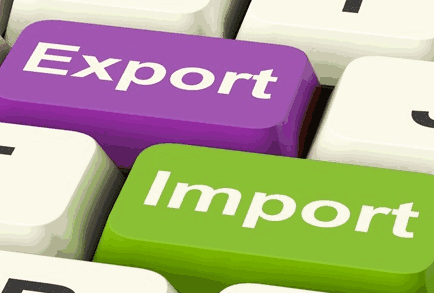 Trade Data
Trade Data
 2024-06-27
2024-06-27
In today's interconnected world, finding the right buyers is crucial for any business involved in international trade. With the advent of global trade data platforms, companies can now leverage vast amounts of information to identify potential buyers, understand market trends, and make informed business decisions. Here's a guide on how to effectively use global trade data to find buyers.

1. Understand the Basics of Global Trade Data
Global trade data includes detailed records of international trade transactions. This data is collected from customs authorities and other sources, and typically includes information such as:
Importer and exporter names
Product descriptions
Quantity and value of goods
Country of origin and destination
Shipping details
Having access to this data allows businesses to analyze trade patterns, identify potential buyers, and understand market dynamics.
2. Choose the Right Trade Data Platform
Several platforms provide access to global trade data, each with its own strengths. Some of the most popular platforms include:
Tendata: Known for its comprehensive coverage and real-time updates, Tendata is a leading platform for accessing global trade data.
PIERS: With over 40 years of data, PIERS offers extensive coverage of major global ports and detailed logistics information.
Datamyne: Specializing in data for the Americas and Asia, Datamyne provides highly accurate and customizable trade data.
Selecting the right platform depends on your specific needs, such as geographic focus, data detail, and budget.
3. Analyze Import Data
One of the most effective ways to find potential buyers is to analyze import data. By looking at which companies are importing products similar to yours, you can identify potential buyers who are already active in your market. Here’s how to do it:
Step 1: Identify Relevant HS Codes
HS (Harmonized System) codes classify products in international trade. Identify the HS codes for your products to ensure you are looking at the right data.
Step 2: Filter Data by Country
Choose the countries you are interested in targeting. This could be based on market potential, ease of doing business, or other strategic factors.
Step 3: Analyze Importer Information
Look at the list of importers for your product in the target countries. Pay attention to the frequency and volume of their imports, as well as the suppliers they are currently buying from.
4. Utilize Export Data
Export data can also provide valuable insights, especially if you are looking to understand competitive dynamics or explore new markets. Here’s how to use export data effectively:
Step 1: Identify Key Exporters
Look at the companies exporting similar products from countries with strong manufacturing capabilities. These companies could be your competitors or potential partners.
Step 2: Analyze Trade Routes
Understand the trade routes and logistics involved in exporting to different regions. This can help you identify potential buyers who are receiving goods from your competitors.
Step 3: Evaluate Market Demand
By analyzing export data, you can gauge market demand in different regions. This information can guide your marketing and sales strategies.
5. Leverage Market Trends and Insights
Beyond identifying individual buyers, global trade data can help you understand broader market trends and insights. Here’s how:
Trend Analysis
Analyze trade data over time to identify trends in demand, pricing, and supply. This can help you anticipate market shifts and adjust your strategies accordingly.
Competitor Analysis
Study the trade activities of your competitors to understand their market positioning, strengths, and weaknesses. This can inform your competitive strategy.
Market Segmentation
Segment the market based on various criteria such as geography, industry, and buyer size. This can help you tailor your approach to different segments and maximize your reach.
6. Validate and Reach Out to Potential Buyers
Once you have identified potential buyers, it’s crucial to validate their credibility and suitability. Here’s how:
Research
Conduct thorough research on the potential buyers, including their business history, financial stability, and market reputation.
Contact
Reach out to potential buyers with personalized messages. Highlight how your products can meet their needs and provide value. Be prepared to provide samples, references, and detailed product information.
Build Relationships
Establish and nurture relationships with potential buyers. This involves regular communication, understanding their evolving needs, and providing exceptional customer service.
Conclusion
Using global trade data to find buyers can significantly enhance your international trade efforts. By leveraging detailed trade records, analyzing market trends, and strategically reaching out to potential buyers, you can expand your market reach and drive business growth. Platforms like Tendata, PIERS, and Datamyne offer powerful tools to access and analyze global trade data, helping you make informed decisions and stay ahead of the competition.
Tendata iTrader compiles trade data from 218 countries and provides detailed information on over 130 million import-export enterprises worldwide.
With a daily influx of 10 billion trade records, Tendata efficiently delivers contact details for over 700 million top-level executives and decision-makers in the import-export industry through advanced filtering. This includes email addresses, phone numbers, social media profiles, and more. Additionally, we offer synchronized company profiles, product images, and website links, along with 19 types of visual reports. These tools assist foreign trade enterprises in precise market positioning and thorough market analysis, enabling you to quickly find the exact buyers and suppliers you need.
(>> Visit the Official Shanghai Tendata Website for More Details <<)

Category
Leave Message for Demo Request or Questions


 T-info
T-info T-discovery
T-discovery

 My
Tendata
My
Tendata Market Analysis
Market Analysis Customer
Development
Customer
Development Competitor
Monitoring
Competitor
Monitoring Customer Relationship
Customer Relationship





































































































































